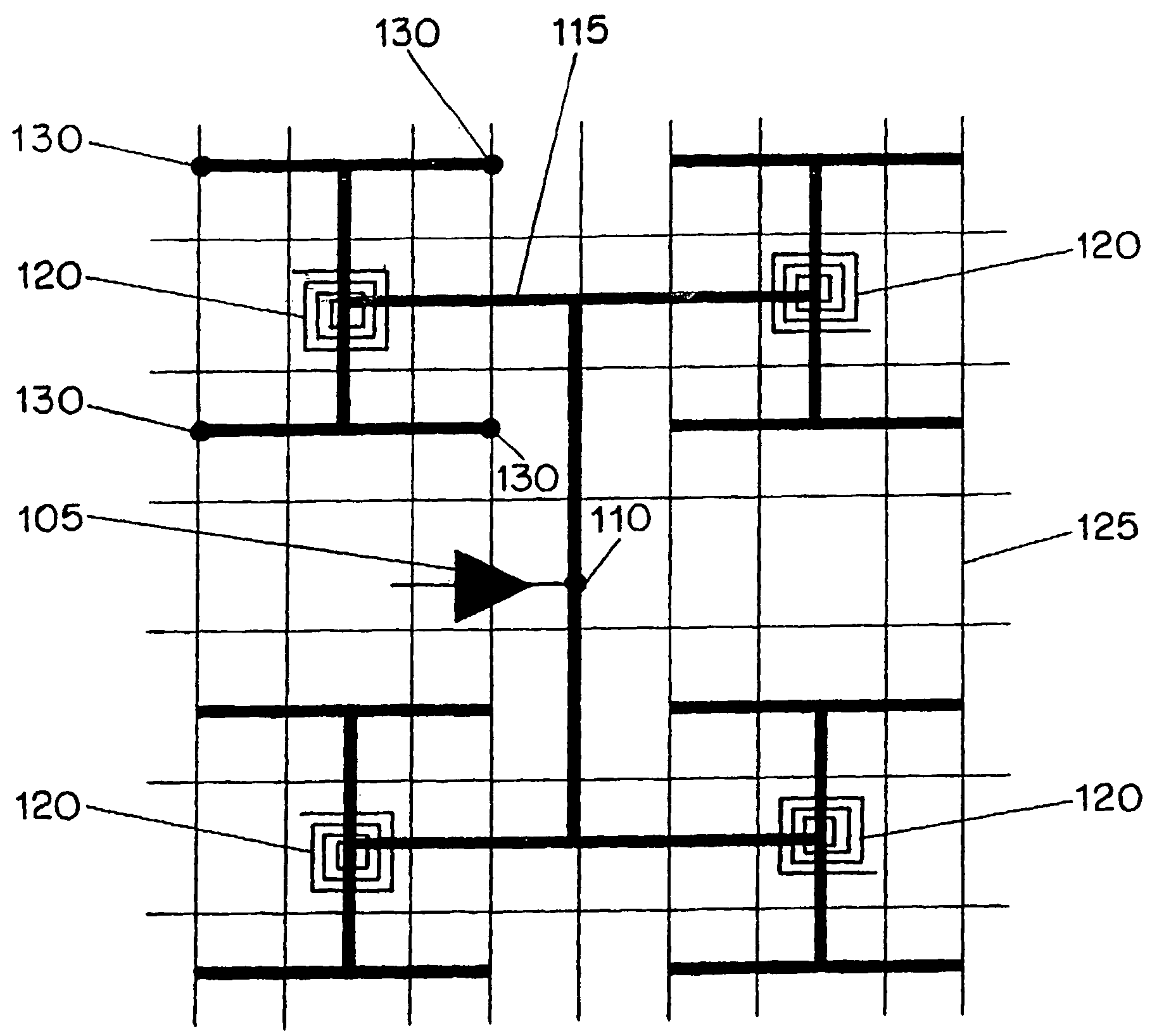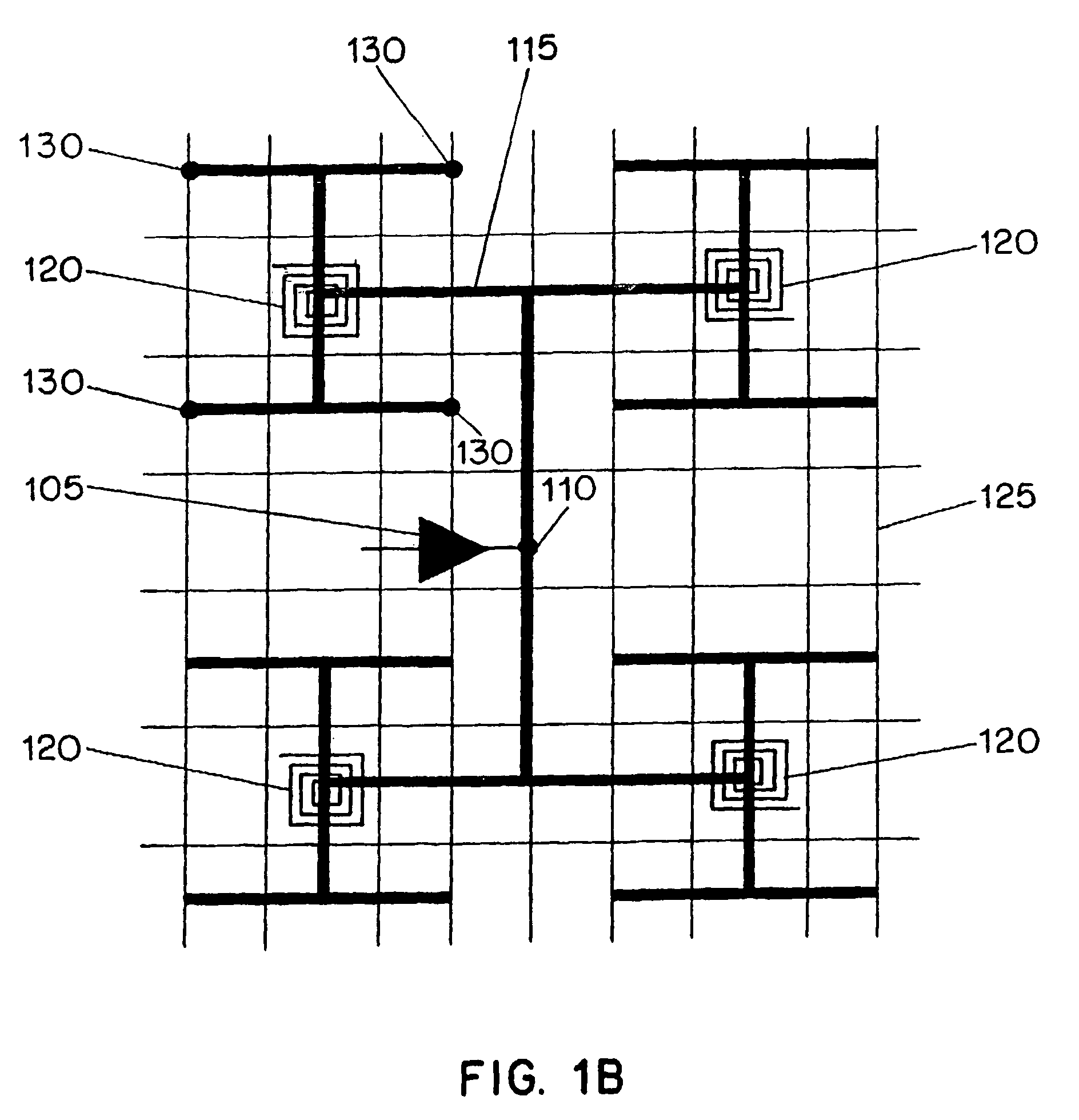Resonant clock distribution for very large scale integrated circuits
a technology of integrated circuits and clocks, applied in the direction of generating/distributing signals, oscillator generators, pulse techniques, etc., can solve the problems of increasing the difficulty of clocking large digital chips with a single high-frequency global clock, increasing dynamic power dissipation, and increasing power consumption. , to achieve the effect of efficient distribution of high-speed clock signals
- Summary
- Abstract
- Description
- Claims
- Application Information
AI Technical Summary
Benefits of technology
Problems solved by technology
Method used
Image
Examples
Embodiment Construction
[0031]The present invention provides a circuit topology and design method for distributing a clock signal within an integrated circuit. The present invention provides a clock distribution circuit which is substantially resonant at the clocking frequency such that power efficiency is improved and skew and jitter is minimized.
[0032]FIG. 1A is pictorial diagrams illustrating a top planar view of an embodiment of the present resonant clock distribution circuit as viewed through a number of metalization layers of an integrated circuit. The circuit of FIG. 1B illustrates a single sector 101 of the circuit of FIG. 1A. The circuit of FIG. 1B may represent a sector having an area of about 2,500 μM×2,500 μM. A typical microprocessor clock distribution may include several dozen of such clock distribution sectors, which are coupled together to provide a global clock distribution circuit. The circuit of FIG. 1A illustrates the circuit of FIG. 1B implemented in four adjacent sectors of an integra...
PUM
 Login to View More
Login to View More Abstract
Description
Claims
Application Information
 Login to View More
Login to View More - R&D
- Intellectual Property
- Life Sciences
- Materials
- Tech Scout
- Unparalleled Data Quality
- Higher Quality Content
- 60% Fewer Hallucinations
Browse by: Latest US Patents, China's latest patents, Technical Efficacy Thesaurus, Application Domain, Technology Topic, Popular Technical Reports.
© 2025 PatSnap. All rights reserved.Legal|Privacy policy|Modern Slavery Act Transparency Statement|Sitemap|About US| Contact US: help@patsnap.com



